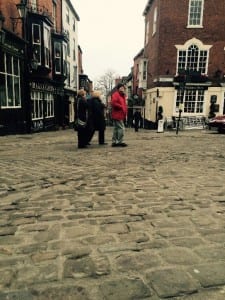Trying to find solid evidence of an earthquake which occurred in 1185 is not the easiest task which I have ever taken on, however it is one of the more interesting. After deciding to venture into Lincoln’s library to see what it had to offer we were approached by a Librarian who asked us what we were looking for, in this question truly started our mission.
Three librarians helped in the search for information for the 1185 earthquake as well as other earthquakes and natural disasters which may have helped our search. We soon found out about the fires, and numerous earthquakes yet none to the magnitude of the one in 1185.
I was most interested when we were given numerous letters stapled together from the 6th of December 1985 (Gates S, 1985) , a woman was wanting to know more about the earthquakes which had occurred in Lincoln, within this a Dr J. A. Galletly wrote that he had found from a date book which he had that there had been earthquakes in 1038, 1142 and 1185 (Galletly J.A, 1985). Using this knowledge I needed to know about said date book and the information in which it held. The librarian then went on a search and came back with a red date book warning us to be careful and to return it straight after use as it would have to be locked away again. The date book noted:
1185
“An earthquake which overthrew a Church and did considerable damage to the Cathedral, of which Benedict, the Abbot of Peterborough says, the like had not been heard in England: – That the rocks were rent, and the Cathedral Church of Lincoln was cleft from top to bottom ….” (The Date Book, 31)
We were also given newspaper cuttings from later years explaining the extent of earthquakes and the harm that it can do to wildlife, especially birds. Something else that did come of interest was a report that was announced which recalled any diaries, journals or personal media in any way, or any parish records etc which may shed a light on the 15 April 1185 earthquake. This allowed us to see that still even Lincoln council are issuing recalls for any information which could help them into their research of this event, of which the magnitude in England has been unheard of since.
The Date Book, R.E. Leary.
Galletly, J. A. (1985) Earthquakes in Lincoln. [letter] Sent to S Gates, 19 December. Lincoln: [Accessed 23 March 2015].

